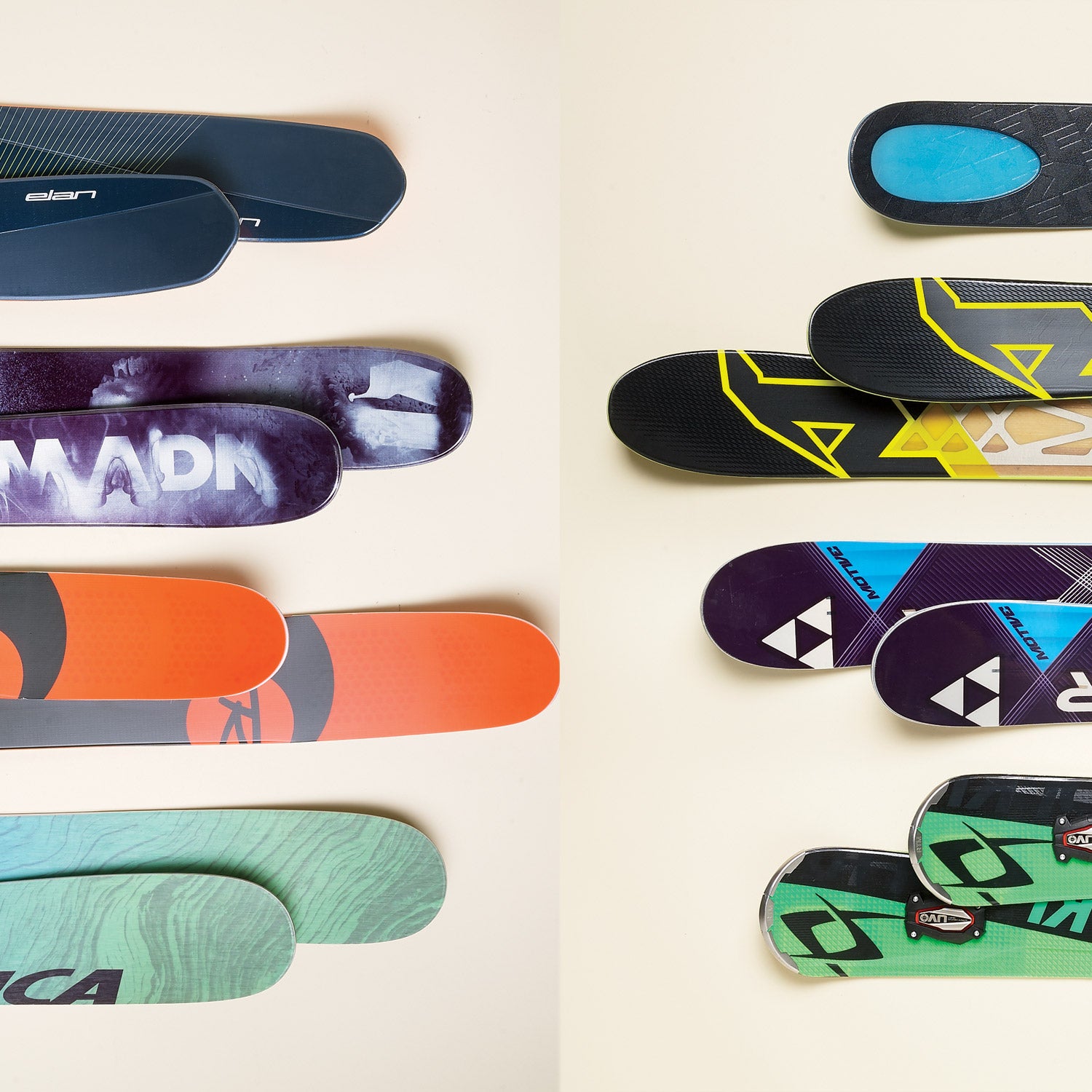The big takeaway from our annual ski test in Snowbird, Utah? Versatility now reigns supreme. Hardpack or corduroy, frontside turns or untracked back-bowl powder—these eight skis shine wherever you do.
Kastle FX95 HP ($1,199)
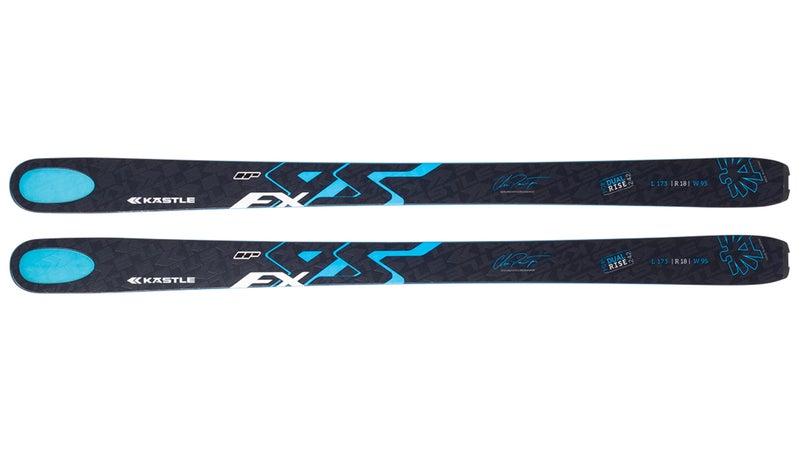
Best For: Doing it all.
The Test: Two sheets of titanium alloy, a silver fir core, and the fastest graphite base that money can buy are all Kastle FX staples. This is, after all, the premium brand on the market. But the earned the Gear of the Year award in our winter Buyer’s Guide for more than its pedigree; it won because Kastle overhauled its already great camber and profile. The tapered tip and tail, paired with just the right amount of rocker, make for a loose, surfy feel on soft snow without sacrificing edge hold on hardpack. It’s plenty wide for most powder days—but a touch of camber means you can rail groomer turns all day, too.
The Verdict: “Scalpel-like precision on wind-scoured hardpack, but handled 24 inches of settled powder just fine,” reported one tester. 126/95/115
Nordica NRGy 90 ($699)
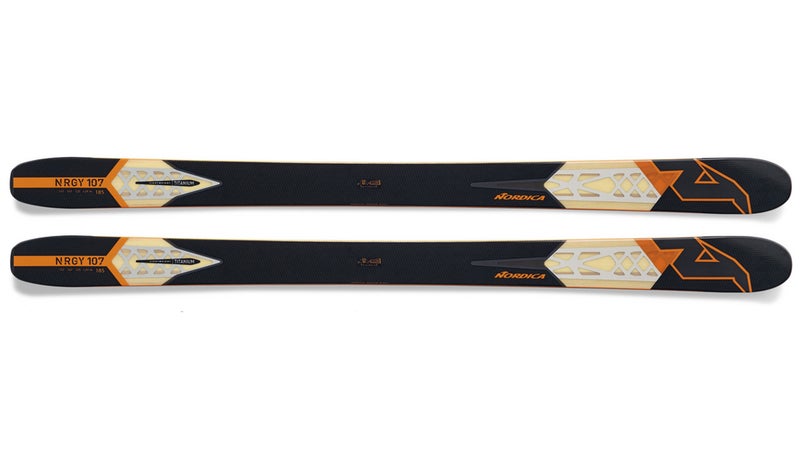
Best For: Everyday Vermont.
The Test: In the bigger sizes (177 centimeters and up), the arcs a smooth, round 21.5-meter GS turn with very little effort. And that same big turn geometry makes it sure-footed in soft snow on open terrain. Testers praised the strong tail for stability at top speeds, though some found it tough to bend into smaller turns while going slower. Still, the full wood core backed by a milled-out titanium torsion bridge keeps it smooth for cruising.
The Verdict: Bigger skiers who fly on trails, start here. “Not for the hip-pivot crowd,” said one tester. “You need to know how to set an edge and follow through.” 126/90/110
Fischer Motive 86 Ti ($749)
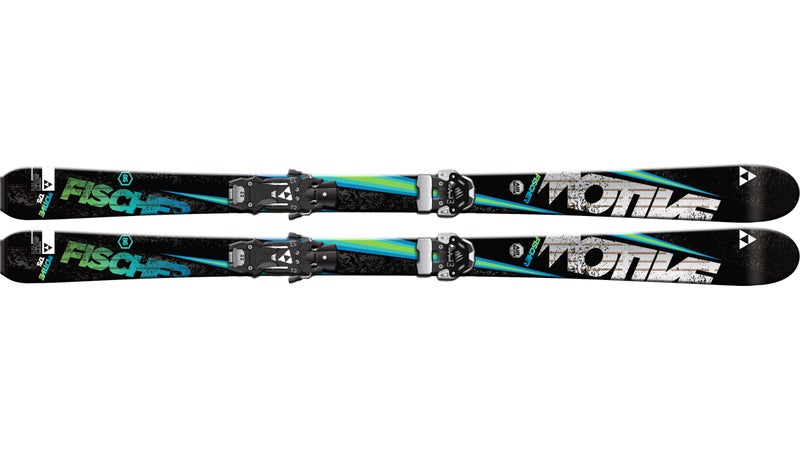
Best For: Linking carved turns.
The Test: Over in Europe, the would be considered a fat ski. Stateside, it’s an all-mountain carver for technical skiers who love banking medium turns in the fall line but don’t want to swap skis if it snows six inches. We judged it to be one of the top skis in the test for autopilot-easy instructor turns. But tip rocker and ample girth let you dump speed and butter the Motive at will. Part of the credit for that loose feel also rests with Fischer’s AirTec construction (the wood core is milled out in an offset pattern along the length), which shaves weight without killing power.
The Verdict: Race performance that intermediate skiers will love. 128/86/116
Völkl RTM 84 UVO ($1,150)
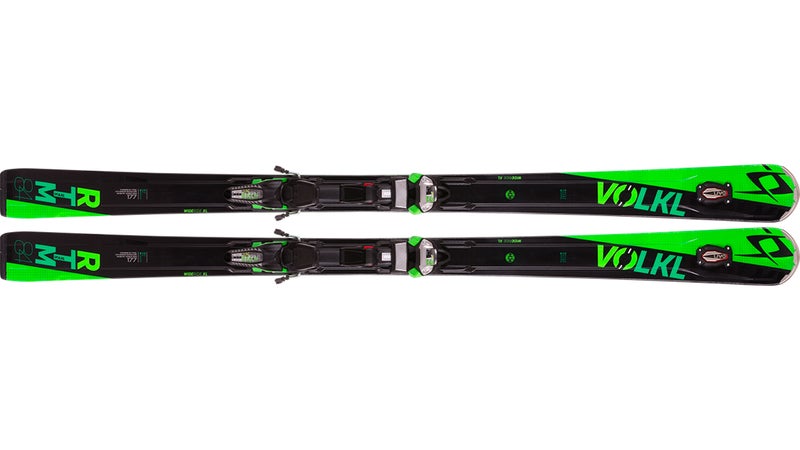
Best For: Carving bulletproof ice or fluffy corduroy.
The Test: At first glance, the brand-new looks about as forgiving as an illegal racing ski, with an aggressive 3-D milled core, an extra-wide binding platform for maximum edge grip, and a UVO vibration dampener on the shovel to absorb high-speed chatter. As expected, it ate up hardpack and gave us plenty of confidence hanging out big turns. But with an 84-millimeter waist, it’s actually quite fat for a frontside ski, offering a nicely stable platform. Generous rocker at the tip and tail allow you to enter and exit turns with ease.
The Verdict: Rips as hard as anything we tested on packed snow, but floats in buckle-deep mush, too. “The perfect ski-coach or instructor ski,” said one tester, who actually is a ski coach. 131/84/112
Elan Spectrum 95 Carbon ($775)
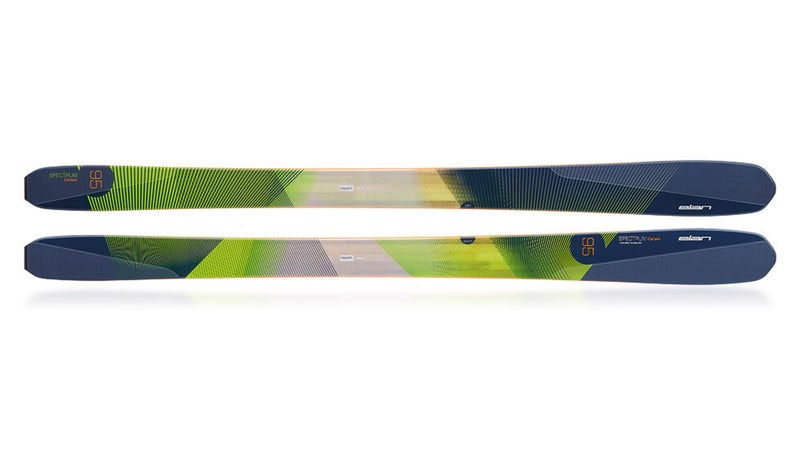
Best For: Easy cruising out West.
The Test: The bane of most improving skiers? Catching an outside edge. Rockered tips help, but the trade-off is losing edge contact in a turn. Elan’s solution is asymmetrical Amphibio construction. Instead of two identical skis, the Amphibios have dedicated left and right sticks. The inside edge runs the full length, while the outside tip and tail edges are rockered up. Our testers found the the loosest and easiest-turning ski in the test. It laid down a nice medium-radius carve on soft groomers, but the light carbon tubes in the wood core made it a hair nervous at top speeds.
The Verdict: Light, responsive, and energetic. The leader of the pack for ease of use. 136/95/111
Armada Invictus 108Ti ($875)
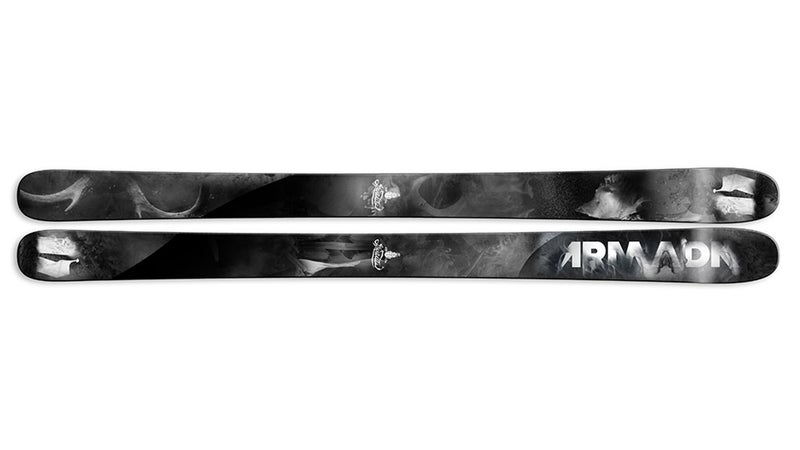
Best For: Deep snow.
The Test: Powder skis used to be scary on hardpack: too much rocker and a lack of internal fortitude made them annoyingly skittish. Not so the latest all-mountain versions, which blend rocker with underfoot camber and gutsy innards of wood and metal. The features more extended sidecut than most of Armada’s offerings, as well as two full sheets of aluminum alloy to dampen and energize the ride. It proved smooth and maneuverable—especially for skiers who weigh under 175 pounds. (The shovel might be a bit too soft for large folks.)
The Verdict: An everyday ski with effortless smearability for big, snowy mountains like Jackson and Revelstoke. 138/108/128
Rossignol Super 7 ($850)
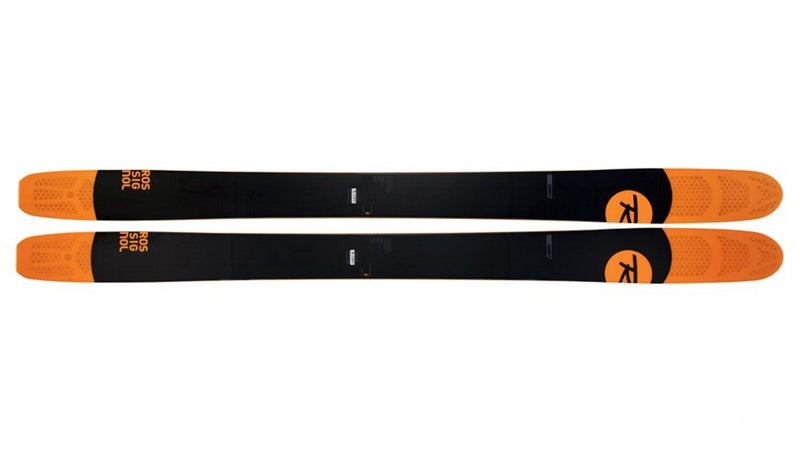
Best For: Surfing and slashing untracked powder.
The Test: There’s a reason you see a lot of in Western tramlines: it’s still the most user-friendly, effortless, fun powder ski ever made. It features Rossignol’s heralded Air Tip honeycomb up front and out back to cut weight, and tip taper and ample rocker let it float in crust, crud, and fluff. But unlike many a lightweight powder ski, it doesn’t chatter at speed, and you can even arc it into mellow groomer turns on demand.
The Verdict: “Inspires confidence on the deepest days,” said one tester. “You can trust the stability.” 140/116/130
Nordica Patron ($849)
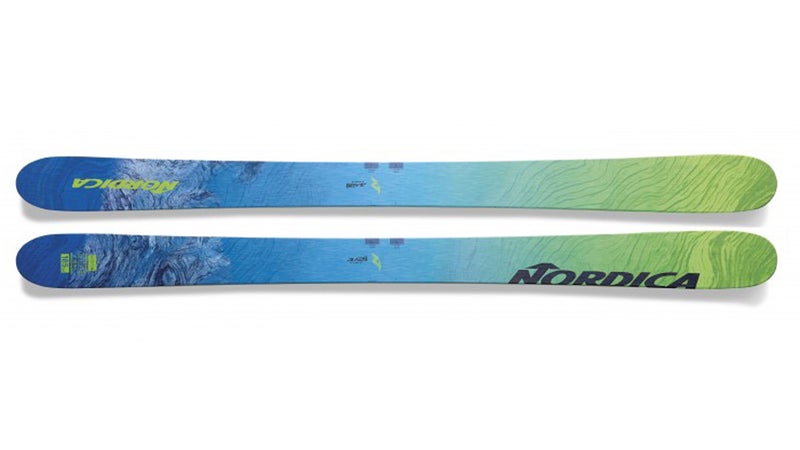
Best For: Going full tilt in the back bowls.
The Test: Some pure powder skis are designed for surfing around in the trees; others are built to go fast in open country. is the latter. It’s by no means difficult to turn, but carbon-fiber reinforcements, a beefy wood core, and a powerful tail make for consistent rocketing in untracked snow on cut trails, treeless faces, and sweeping bowls. “It’s playful and light, but you can’t overski it at high speeds,” said a tester. The downside? While the tail boosts directional stability, it can require a little bit of muscling at slow speeds in tight spots.
The Verdict: The fattest ski you’ll ever need. 143/113/132


